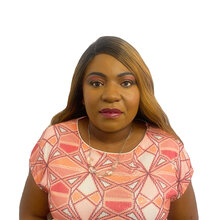Strategies for Creating an Inclusive learning Environment
According to Statistics Canada, most Canadian students with disabilities attend regular classes. Provinces have educational policies that aim to offer adequate education to all students regardless of their abilities. However, in order for students with different abilities to reach their highest potential, educators should create a supportive and inclusive learning environment. Below are some strategies that can help you create an inclusive classroom experience for all students.
Get to know your students
Building positive relationships with your students is key to creating a supportive and inclusive learning environment. It will help you understand each students' needs, and provide those with varying disabilities appropriate accommodations. Students who have a supportive relationship with their teachers are more likely to feel comfortable approaching their teachers with questions, and seeking guidance on understanding and skills.
As a student with a disability, I benefited from having a strong connection with my teachers. I remember how my high school math teacher developed a positive relationship with me to understand my specific needs, as he had never previously taught a student who is blind. Despite the fact that none of my math books were translated into braille, he found ways to describe visuals and processes that other students had access to. As a result, I succeeded in my math course. Being able to grasp the foundational knowledge through that introductory course helped me succeed in subsequent courses. A few years later, I obtained a Baccalaureate in Mathematics and Philosophy.
Getting to know your students will also help you avoid making assumptions about what students with disabilities can or cannot achieve.

Help students develop empathy
Helping students develop empathy towards their peers with disabilities is important to create an inclusive learning environment. Based on my experience as a person with a disability, many students with disabilities often encounter loneliness and peer rejection in school. Feeling welcomed and having that sense of belonging are key to a student’s academic success.
How can educators help students develop empathy?
There are a variety of methods educators can use to help students develop empathy towards their peers with disabilities. Here are three practical ways for teachers to help students develop empathy:
Design and engage all students, including those with disabilities, in activities that promote teamwork. This can help develop empathy, as students will gain a better understanding of the challenges their peers with disabilities may face. It will also help all students recognize that students with disabilities are not different; they simply approach things differently and can achieve the same results as everyone else.
Furthermore, teachers can plan reading and/or storytelling times in which students read and discuss materials featuring characters with disabilities. This can help all students connect with these characters and understand their experiences, eventually promoting empathy.
Additionally, teachers can invite guest speakers with disabilities, such as Rick Hansen Ambassadors, to share their personal stories. Interacting with real people can impact students' understanding and help develop empathy.
Depending on the age group, educators can introduce discussions about disability and inclusion.
Helping students develop empathy can influence their attitudes towards peers with disabilities in a positive way.

Practice differentiated instruction to promote inclusion
According to M. Gaudreault, a Grade 2 educator who has experience teaching students with disabilities, practicing differentiated instruction will benefit all students as it recognizes the varied needs, abilities and learning styles of students. Educators can design a variety of learning materials and activities to cater to the needs of all students, including those with disabilities.
In other words, they can use a mix of instructional methods, such as group work, hands-on activities, and individualized assignments. This will allow students with disabilities to interact with the content in ways that help them to maximize their potential. Using this teaching approach can not only help educators create a more inclusive learning environment, but also help students with disabilities not feel left behind.
Keep instructions simple
As Mrs. Gaudreault commented, students with certain types of disabilities may have difficulties staying focused for a long period of time, and some may have difficulty taking in lots of information at once. It is therefore important to break down tasks into small and manageable pieces. Educators should try to teach one concept at a time, and keep assignments/lessons short. When projects are too long or complex, some students may become confused or frustrated. When educators keep instructions simple, they make the content accessible to all students.
Develop a structure
Students with certain types of disabilities strive when there is an established routine. Whether you have one or several students with disabilities in your classroom, sticking to a daily routine will help to minimize distractions. It can also help students maintain their focus while in class.
In conclusion, creating a supportive and inclusive learning environment is an ongoing journey. As educators engage strategies discussed in this blog, they will create an environment where all students, including those with disabilities can flourish academically. This can make a profound and positive impact on the lives of students with disability.







